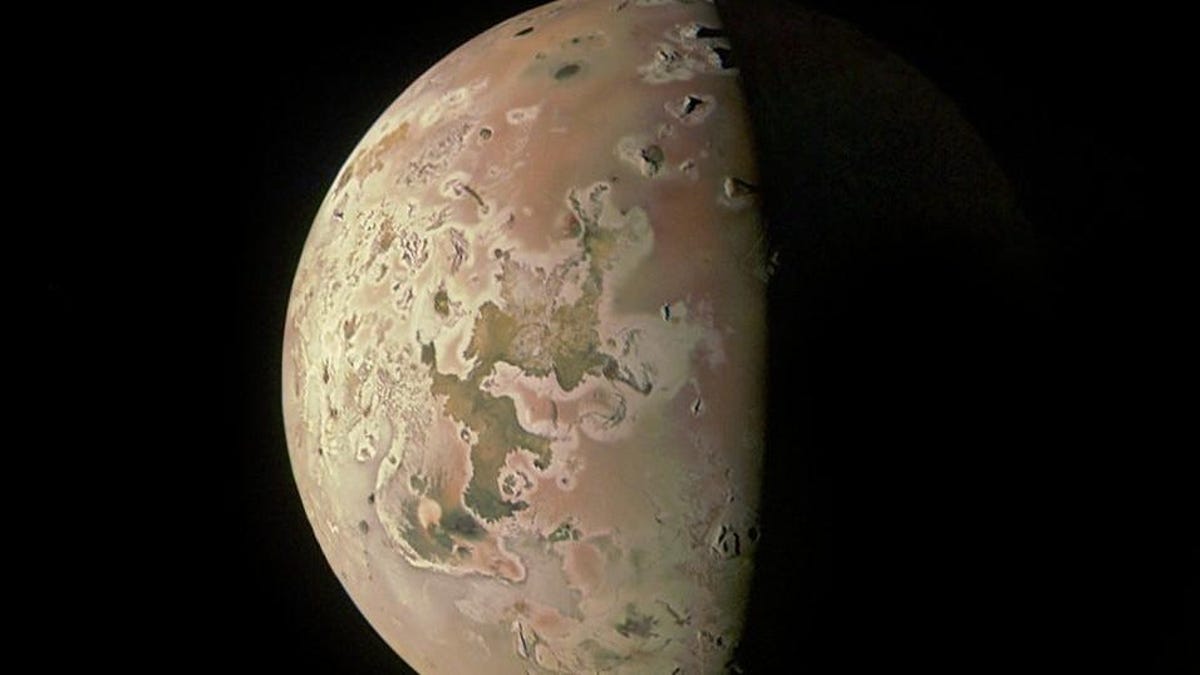Exploring the Enigmatic Moons of Jupiter: Juno Reveals Haunting Images of Io’s Volcanic Surface
After years of capturing the awe-inspiring expanse of Jupiter, the Juno spacecraft has now turned its gaze toward the enigmatic moons orbiting the gas giant. During a recent close flyby of Jupiter’s eerie moon, Io, Juno captured images of a charred, volcanic world caught in a haunting gravitational tug. The photos, shared by NASA this week, offer a glimpse into the tumultuous history of Io, the most volcanically active body in our solar system.
Released on the mission’s official website, these captivating images are brought to life by talented data visualization artists who transform raw data into stunning renderings. One such artist, Kevin Gill, skillfully processed the image above, while the image below was edited by Ted Stryk.
This particular snapshot of Io, taken as the Juno spacecraft draws nearer to the moon, provides one of the clearest views we have ever seen. The lunar surface is marred by a labyrinth of numerous volcanoes and vast lakes of molten silicate lava, giving Io an appearance of perpetual torment.
Trapped between the immense gravitational forces of Jupiter and the gravitational tug of its sister moons Europa and Ganymede, Io is in a constant state of stretching and squeezing. This phenomenon is a major contributing factor to its intense volcanic activity.
Juno has been diligently studying the Jovian system since 2016 and has previously observed Io during flybys in May and July. In September, Juno captured a heartwarming family portrait of Jupiter and Io, placing the gas giant and its moon side by side. Future encounters with this volcanic world are planned for December 30, 2023, February 1, 2024, and September 20, 2024. These close approaches will allow Juno to gather more data on Io’s activity, but with caution, as its haunting nature demands.
As the innermost of Jupiter’s large moons, Io plays a crucial role in the planet’s magnetosphere. It serves as the primary source of charged particles, which create a captivating donut-shaped cloud of ions and electrons known as the Io Plasma Torus. This ethereal cloud is formed when atmospheric gases from Io become ionized.
During future flybys, scientists from the Southwest Research Institute (SwRI) will harness the power of the Hubble and James Webb telescopes to simultaneously observe Io from a distance, unlocking further mysteries of this enigmatic moon.
For more captivating spaceflight content, stay tuned to our X (formerly Twitter) and don’t forget to bookmark Gizmodo’s dedicated Spaceflight page.


